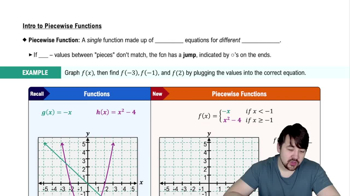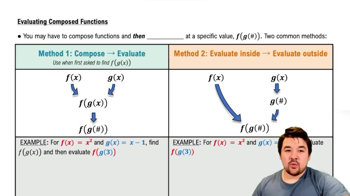Combining Functions
Assume that f is an even function, g is an odd function, and both f and g are defined on the entire real line (−∞,∞). Which of the following (where defined) are even? odd?
d. f² = ff
 Verified step by step guidance
Verified step by step guidance Verified video answer for a similar problem:
Verified video answer for a similar problem:



 5:56m
5:56mMaster Adding & Subtracting Functions with a bite sized video explanation from Patrick
Start learning